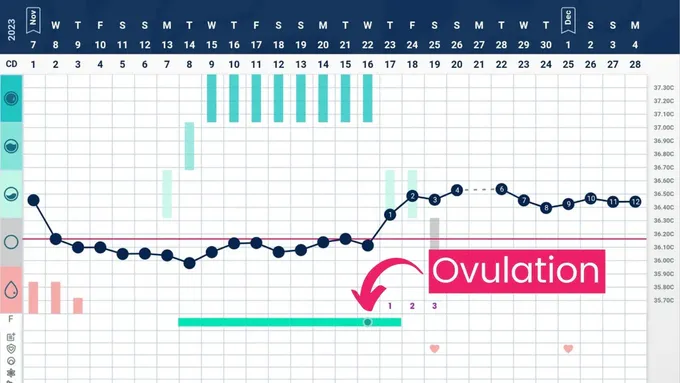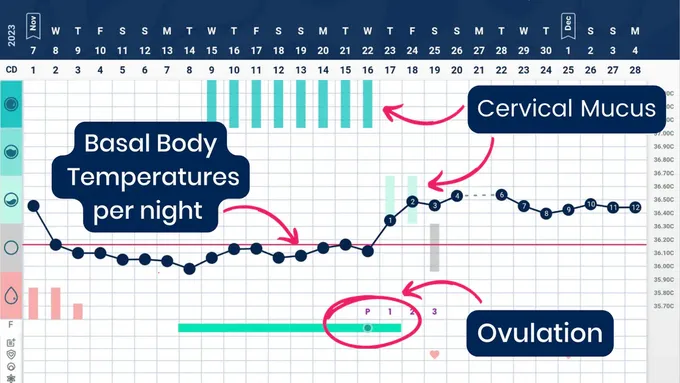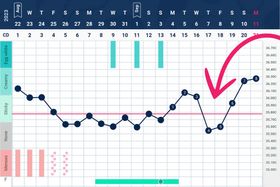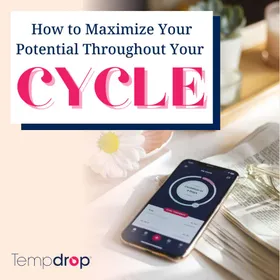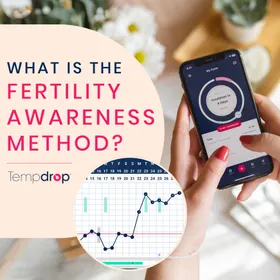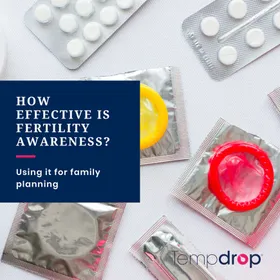The Top Signs of Ovulation to Watch Out For
Published February 5, 2025.
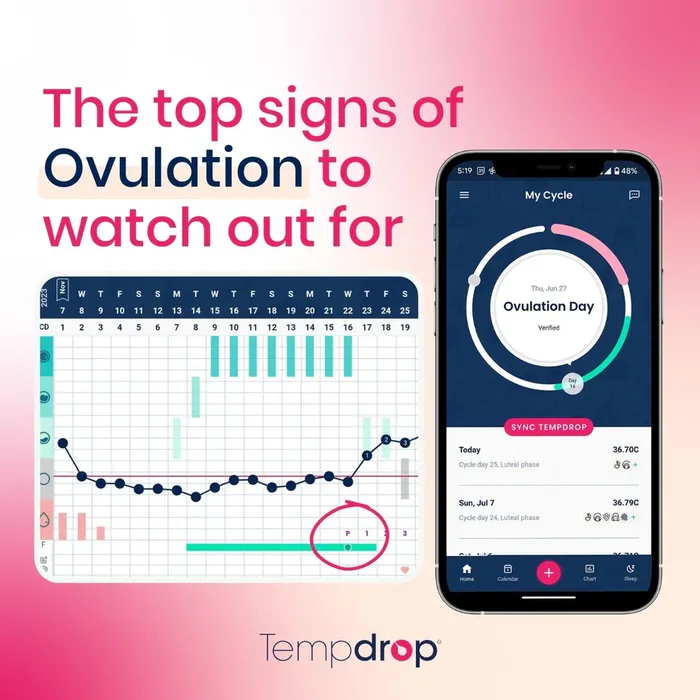
Your period is not the main event of your cycle - ovulation is! Without ovulation, you wouldn’t experience the cascade of hormonal events that trigger your next period. The time between ovulation and your next period (or the luteal phase) remains relatively the same for an individual each cycle (between 9 and 17 days). Once you ovulate, the hormonal events that occur tell the body to prepare the uterine lining to host a potential fertilized egg. If fertilization doesn’t happen, the hormone progesterone dips, and your period arrives.
While ovulation is key for getting pregnant, I can’t overestimate the importance of ovulation, whether or not you’re trying to get pregnant. Ovulation is key to indicating the health of your hormones as well as your overall health. Your hormones are connected to your overall health. And ovulation is a sign your hormones are in good communication with your reproductive system.
There are many different ways to track and identify ovulation. If you’re trying to conceive, you’ll want to pay attention to when ovulation is about to happen, because once an egg is released, it's only viable for 12-24 hours - and it's impossible to know from tracking symptoms when ovulation happened exactly (we can ballpark a 2-3 day time frame). Understanding where you are in your cycle and tracking several fertility signs will optimize your chances of getting pregnant.
You can chart your cycle either on a paper chart or in an app, such as Tempdrop's charting app (Android/iOS) - you can also use this in manual interpretation mode! That means you get all the benefits of paper charting conveniently on your phone. With basal body temperature, we can know after ovulation has happened due to the presence of progesterone in the body, but we can never predict before ovulation has happened.
A Tempdrop chart, with confirmed ovulation on day 16 of cycle
Ovulation doesn't occur on day 14 for everyone. The date of ovulation varies from woman to woman. If you are stressed, travelling, have PCOS, have just come off hormonal birth control, or are postpartum, ovulation can be delayed and unpredictable. Some women also just ovulate earlier or later than other women, and this is because we are humans - not robots! Paying attention to your cycles and when you ovulate will help you identify the optimal time to conceive, but it will also clue you into why you might feel the way you do on certain days of your cycle.
Top Ovulation Systems
While the only way to confirm the exact time of ovulation is through ultrasound, the timeframe can be narrowed to within a few days by tracking the following fertility markers: cervical mucus, cervical position, and secondary signs like spotting and cramping.
Cervical Mucus
Cervical mucus is a hydrogel made mostly of water secreted by your cervix. As ovulation approaches, levels of estrogen rise and triggers an increase in water content in cervical mucus. Most methods tracking mucus refer to this as peak mucus. Around the time of ovulation, your cervix will produce peak type mucus because it facilitates sperm reaching the egg. Without cervical mucus, sperm would die in the vagina before being able to make their way to the egg.
Tracking your cervical mucus, especially when you notice peak type mucus (stretchy, clear or partly clear, lubricative, watery mucus) will let you know ovulation is approaching. The day of your most fertile mucus (the day you notice the most peak mucus before you switch to dry or non-peak mucus) is the optimal day for intercourse if you are trying to get pregnant. You won't know it was the peak day until after the fact, so if you're trying to conceive, it's suggested to get busy at least every other day while you have peak mucus.
A Tempdrop chart showing cervical mucus, BBT and ovulation on day 16
Cervical Position
While cervical mucus is impacted by the cyclical hormones present throughout your cycle, your cervical position also reflects the rise and fall of estrogen and progesterone during your cycle. As ovulation approaches, your cervix will become high, soft, and open - as opposed to low, firm, and closed. For those who check cervical position, it should be done at about the same time each day and differences between the current observation and the last are the most important.
Spotting
Some women experience a little bit of spotting at the time of ovulation. This is nothing to be concerned about and is completely normal. It may look like bright red blood mixed in with cervical mucus. The presence of ovulatory spotting indicates that ovulation is about to or has just occurred. However, it isn't a universal symptom and even those who experience it don't experience spotting every cycle, so it's a great symptom to be aware of so it doesn't surprise you.
Ovulation Pain or Mittelschmerz
Another sign of ovulation is something some women experience around the time of ovulation is ovulatory pain, ovulation cramping, or mittelschmerz. Ovulation pain may occur prior to or at the time that an egg is released, but the cause is not known. Two possible causes are that the developing follicle (egg) stretches the ovary as it grows, or that blood released at ovulation irritates the abdomen. The pain may occur on either side of the uterus in an ovary. Keep in mind that ovulation pain can happen for several days leading up to ovulation. Again, not everyone experiences ovulation pain, cramps, or mittelschmerz, so it's not the best ovulation indicator - but it may be a good one if you experience it.
Changes in mood and energy
While not a definitive sign of ovulation, by tracking your cycle and the changes in mood from day-to-day, you may notice you feel the same around ovulation from cycle to cycle. The presence of estrogen may increase your energy, creativity, motivation and libido.
Whether you only experience the "standard" signs like cervical mucus and position, or experience all the secondary symptoms listed too, it's important to listen to and understand your body and health.
